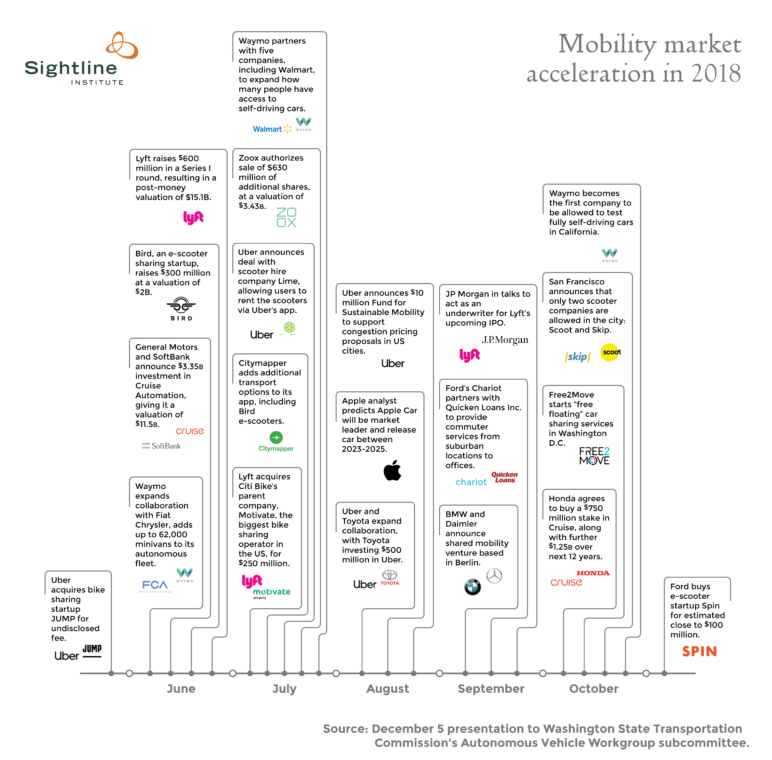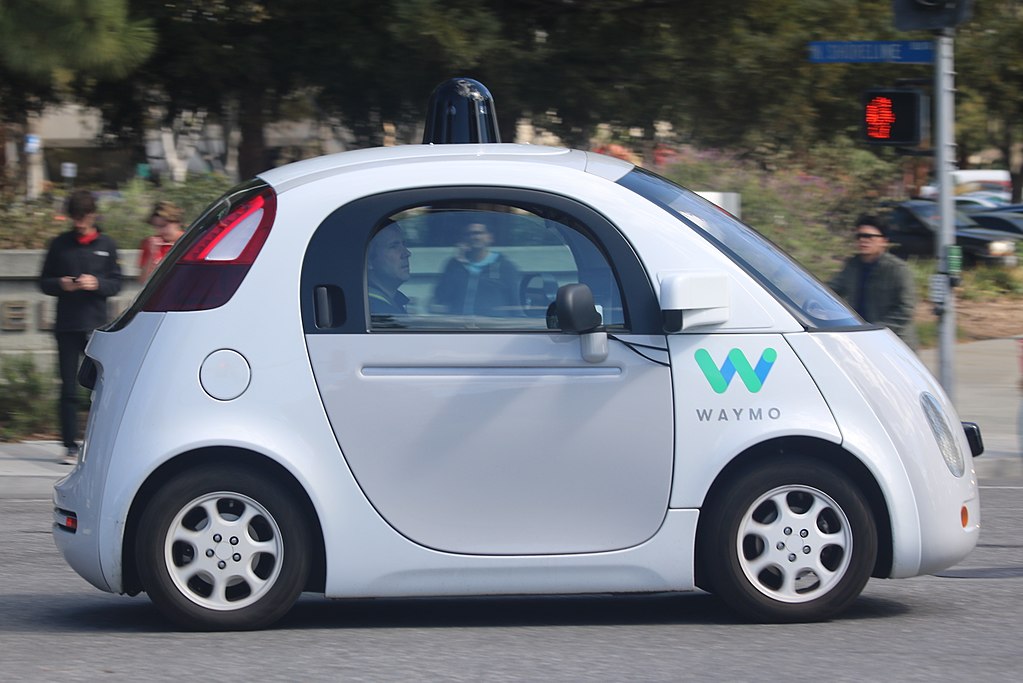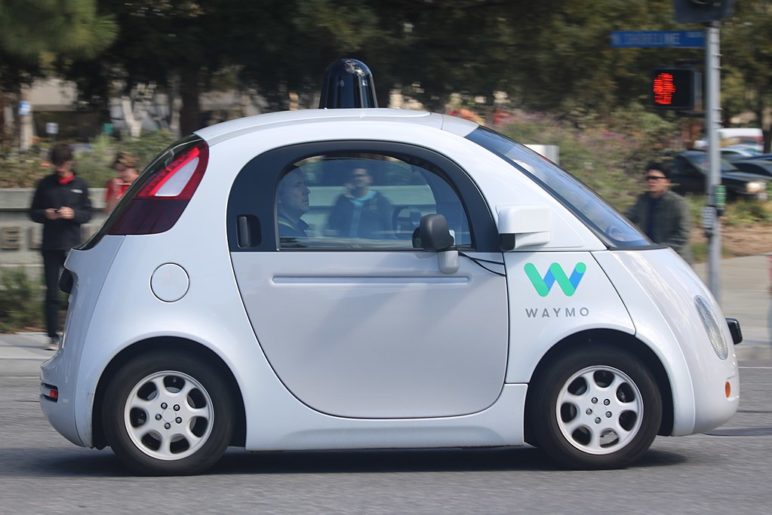Will the robots show up in Cascadia in a few years? Or are they doomed by the technology hype cycle to crawl through the trough of disillusionment for decades?
Earlier this month, Google subsidiary Waymo announced the launch of a commercial robo-taxi service in Chandler, Arizona, a suburb of Phoenix, after nearly two years of testing there. Yet just a few weeks earlier, automation expert Mary Cummings, the director of the Humans and Autonomy Laboratory at Duke University, said she doesn’t expect widespread use of robo-taxis in the next 20 years.
So which is it? Will the robots show up in Cascadia in a few years? Or are they doomed by the technology hype cycle to crawl through the trough of disillusionment for decades?
The evidence from 2018 suggests that the robots are coming, just not as fast as the companies building them predicted. Waymo’s December announcement of commercial service fell short of what it promised earlier in the year. The vehicles drive themselves, but they still have a driver at the wheel, ready to grab on in case of a robotic mistake. So far, the service is limited to members of the existing pilot group. A reporter at the Arizona Republic followed Waymo’s vehicles for three days in October and November and saw them struggling to change lanes, turn left, and navigate around accidents. Waymo CEO John Krafcik acknowledged that “there’s a long journey ahead.”
And yet a future of shared, electric, and eventually autonomous vehicles appears more likely than ever, even if it takes longer to arrive than some expected. In late November, GM announced it was laying off 14,000 people in five factories and redeploying resources to self-driving and electric vehicle development. A few days later, Dan Ammann left his job as the president of GM to take over Cruise, GM’s self-driving car unit. GM’s CEO Mary Barra is betting the company on a “a post-oil, robo-taxi dominated future.”
GM wasn’t the only company making plans in 2018 for a transportation future built around shared-mobility services. In just six months, most of the world’s automotive transportation companies announced billions of dollars in new investments, partnerships, and joint ventures as global players sought advantage and scale in a rapidly-changing market. The large players look to offer on-demand mobility as a service with a mix of electric scooters, e-bikes, and cars. For now, the cars will be driven by people, either paid drivers in the Uber/Lyft model or as short-term rental cars in the Car2Go/Reach Now model.

Original Sightline Institute graphic, available under our free use policy.
Eventually though, robo-taxis will join the mix, initially in well-defined areas at slow speeds using what’s called Level 4 automation. Level 5, where the robot can handle every situation a human can, may indeed take decades to arrive, but Level 4 robots could do a lot to improve urban mobility before then. Their services could range from low-speed shuttles like those operating on the Las Vegas strip to the autonomous grocery delivery service that Kroger is testing. In the future, Uber and Lyft users may find some trips, where Level 4 will suffice, offered in a self-driving car while more complicated routes or conditions do not. Over time, the robots will learn and safely handle a wider variety of conditions.
Whenever autonomous vehicles find their way into our urban areas in the future, the last year made clear that we humans need to use our democratic institutions to set the rules for how they operate. The first pedestrian fatality from an autonomous vehicle, in March, underscored the need for sensible regulation. Oregon, Washington, and Vancouver, BC all have public work groups established to recommend new laws and regulations to realize the technology’s benefits and mitigate its risks. If the commercial deployment of self-driving technology is still several years away, the citizens of Cascadia can put the time to good use writing laws to ensure electrification, ride-sharing during peak periods, vehicle safety, privacy, and sensible integration with our transit system. We’ll be ready for the robots when they get here.











John Niles
This essay projects great sensibility from the author’s close monitoring of developmental facts and participation in local planning. Well done!
— John Niles, co-author with Bern Grush of the textbook, The End of Driving: Transportation Systems and Public Policy Planning for Autonomous Vehicles (Elsevier, 2018), available soon through Seattle and King County Public Libraries.
Elle Z
So nice to have all of this info in one place. Thanks Sightline! – Urban Planning student
Kelsey Hamlin
Happy to hear this! Thanks for looking/reading! – Communications Associate, Kelsey Hamlin
Angela
I dont need no dam self driving car driving me around. I love driving. I deliver avon and i be having lots of deliveries. I how in the heck im going to pile all my avon in a self driving car and deliver my stuff. The only way i see that is for the car to stay with me the whole time i deliver. I have nightmares about this. Thats taking away people independence. I want to own my car. Yall say self driving cars will still have fatalities but not as much as human drivers. So u mean i would have to chance myself in one of yall cars with no possibility of control. Come on. This is ridiculous. Also i drive uber and thats taking another of jobs away. That is a wonderful hustle tor me and i love interacting with those people. This is pur greed not thinking about people yall taking jobs from.